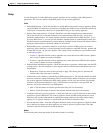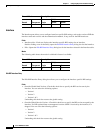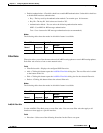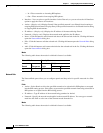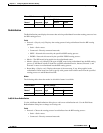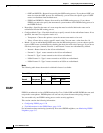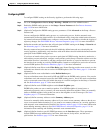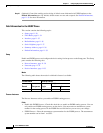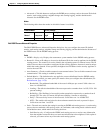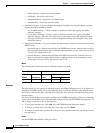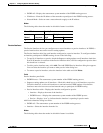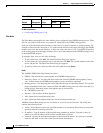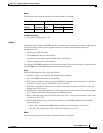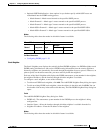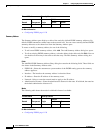
11-31
Cisco ASDM User Guide
OL-16647-01
Chapter 11 Configuring Dynamic And Static Routing
Dynamic Routing
• Advanced—Click this button to configure the EIGRP process settings, such as the router ID, default
metrics, stub routing settings, neighbor change and warning logging, and the administrative
distances for the EIGRP routes.
Modes
The following table shows the modes in which this feature is available:
Edit EIGRP Process Advanced Properties
The Edit EIGRP Process Advanced Properties dialog box lets you configure the router ID, default
metrics, stub routing settings, neighbor change and warning logging, and the administrative distances of
the EIGRP routes for the EIGRP routing process.
Fields
• EIGRP—Display only. Displays the autonomous system number for the EIGRP routing process.
• Router Id—Enter an IP address to be used as the Router ID for the security appliance in the EIGRP
routing process. The router ID is used to identify the originating router for external routes. The IP
address does not have to an address configured on the security appliance, however it must be unique
within the routing domain. If not specified, the highest-level IP address on the security appliance is
used as the router ID.
• Auto-Summary—Check to enable automatic route summarization. Clear to disable automatic route
summarization. This setting is enabled by default.
• Default Metrics—The default metrics are applied to routes redistributed into the EIGRP routing
process. If not specified, you must specify the metrics when you configure the redistribution (see
Redistribution, page 11-36).
–
Bandwidth—The minimum bandwidth of the route in kilobytes per second. Valid values are
from 1 to 4294967295.
–
Loading—The effective bandwidth of the route expressed as a number from 1 to 255 (255 is 100
percent loading).
–
Reliability—The likelihood of successful packet transmission expressed as a number from 0
through 255. The value 255 means 100 percent reliability; 0 means no reliability.
–
Delay—The route delay in tens of microseconds. Valid values are 1 to 4294967295.
–
MTU—The smallest allowed value for the maximum transmission unit, expressed in bytes.
Valid values are from 1 to 65535.
• Stub—The stub area contains the setting for creating an EIGRP stub routing process. A stub routing
process does not maintain a full topology table. At a minimum, stub routing needs a default route to
a distribution router, which makes the routing decisions.
–
Stub Receive only—Configures the EIGRP stub routing process to receive route information
from the neighbor routers but does not send route information to the neighbors. If this option is
selected, you cannot select any of the other stub routing options.
Firewall Mode Security Context
Routed Transparent Single
Multiple
Context System
• — • ——



